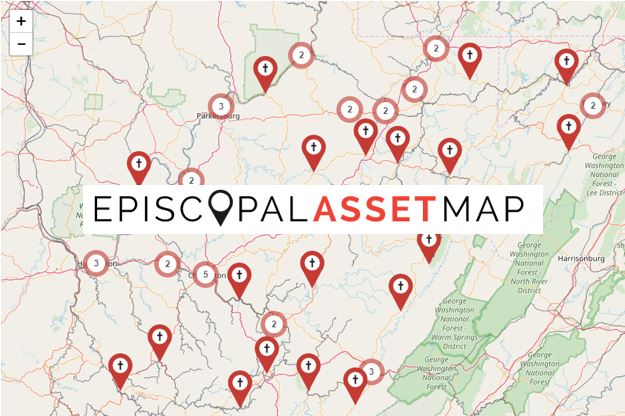Church, like politics, is largely local. While many denominations have trucks and buses ready to send to disaster areas, the Episcopal church’s way of responding is through partnerships between local dioceses who are already present and Episcopal Relief and Development. One of the tools that(ERD). One of the tools that ERD has developed in recent years is the Episcopal Asset Map, an online platform showing the location and ministries of Episcopal churches, schools and other communities, has been revamped and refreshed with more-detailed information, easier access and ease of navigation.
Presiding Bishop Michael Curry called the Asset Map “truly a tool, a resource” and points out that it has been “revised, expanded, updated, user-friendly and now includes virtually the entire Episcopal Church from the largest cathedral to the smallest house church.”
The Episcopal Asset Map is a joint project of the Episcopal Church and Episcopal Relief & Development. This innovative partnership tracks local ministries and shows the location and the array of ministries and programs offered by Episcopal congregations, schools and institutions throughout the Church. Nearly every diocese of the Episcopal Church is represented on the map as well as over 20 networks, such as Jubilee Ministries, the United Thank Offering, Ethnic Ministries, and Episcopal Camps and Conference Centers.
“With the Episcopal Asset Map, you have the opportunity to tell the Church and the world about how your congregation is being called to serve God and neighbor,” explained Tamara Plummer, Asset Map Coordinator for Episcopal Relief & Development. “The Asset Map site will share the many ways you are engaging in the important work that God has called us to. It also helps us assess the gifts of our Church as we prepare to respond to the needs of our vulnerable neighbors after a disaster.”
On the map, Episcopal Church institutions appear as pins, linked to a profile page with additional information about location, hours, facilities, programs and any photos or videos that have been shared and approved. Example is here. https://www.episcopalassetmap.
The Asset Map revamp was a highly collaborative process, involving the feedback and contributions of over 30 dioceses. Diocesan Map administrators, from every province in the church, also participated in the site redesign.
“A website is a tool, but it takes you sharing the stories of our worship communities to make it effective and useful,” said Christopher Sikkema, Coordinator for Digital Evangelism. “We are excited to announce that in the weeks ahead, the Find A Church on www.episcopalchurch.org will be updated by the Asset Map. This move strongly demonstrates our focus on evangelism: every Episcopalian taking the responsibility to tell the story of this diverse Church of ours.”
Updates
Among the many updates to the Episcopal Asset Map are:
- An updated user interface
- Enhanced search capabilities
- Improved abilities for networks across the Episcopal Church to display their data
- Dedicated pages for Episcopal dioceses and networks to tell their stories and connect people with important contacts
“What remains the same is that the map allows us to tell the stories of the whole Church, highlight new and exciting ministries, and begin to understand more fully the ways the Holy Spirit is moving through the congregations, dioceses and networks of the Episcopal Church,” noted Katie Mears, Senior Director of Episcopal Relief & Development’s US Disaster Program. “I’m so excited that this map continues to highlight the presence, ministry and capacity of the church both on normal days, but also after a disaster. We are already seeing diocese and regions use this information as they plan disaster responses.”
For more information about the Episcopal Asset Map, visit here www.episcopalassetmap.org. A short video is also available in English and in Spanish.

